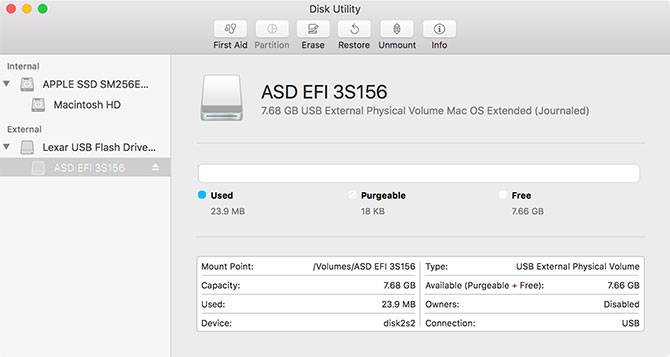ASD Mac OS
Apple Service Diagnostics 3S143 (Mac OS X) 2.43 GB
Note: ASD 3S143 is updated and replaces version ASD 3S141 for Mac Pro (Mid 2010).
Apple Service Diagnostics (ASD) is distributed to Apple Service Providers. The Apple Service Diagnostics application is designed to run
both EFI and Mac OS X tests from an external USB hard drive. Apple Service Diagnostics (EFI) runs low-level tests of the hardware
directly and does not require Mac OS X, while Apple Service Diagnostics (OS) uses Mac OS X to run tests.
Installing Apple Service Diagnostics on a USB hard drive
Please refer to the document “Installing ASD on a USB hard drive” included with this release.
Note: ASD is tested with a custom Mac OS that is supplied in the image. As a test requirement the OS is set up as a root user. DO NOT
copy ASD to another OS or some tests will fail. Also running ASD on another OS removes some of the Finder menu items and sets
preferences specifically for ASD requirements. It will damage your OS so use the one provided.
Booting and using the Apple Service Diagnostics application
Before using Apple Service Diagnostics, disconnect any Ethernet network, USB, and audio cables.
With the USB hard drive containing ASD OS 3S143 and ASD EFI 3S143 plugged into a USB port, restart the computer and hold down
the option key as the computer boots up into the Boot Picker. To run ASD (EFI) select the “ASD EFI 3S143” drive icon and press return
or select it with a mouse click. To run ASD (OS) select the “ASD OS 3S143” drive icon and press return or select it with a mouse click.
ASD (EFI) will load in 20-30 seconds; ASD (OS) will load in 1-2 minutes. After running ASD (OS) or ASD (EFI), press the Shut Down
button to shut down the computer. Removed the USB drive.
Name: Apple Service Diagnostics
Version: 3S143
Mac Platform: Intel
OS version: 10.8 or later
Processor type(s) & speed: 64-bit Intel
RAM minimum: 4 GB
Video RAM: not needed
ASD 3S143
Supports the following machine
Mac Pro (Mid 2010) Only
Download Via UploadGIG
Apple Service Diagnostic (ASD) is Apple's bootable hardware testing console that lets you run extensive technical test routines on your Mac. Alternatively, Apple Hardware Test (AHT) is a simpler version of ASD that is already on most Mac OS X restore DVD's that shipped with your Mac. What is Amazing Slow Downer for Mac Amazing Slow Downer allows you to slow down music without changing the pitch. If you're a musician who likes to learn new songs and techniques by listening to the same piece of music over and over but wish that the music could be played a little slower, then you'll enjoy Amazing Slow Downer. Apple Service Diagnostic (ASD) is Apple's bootable hardware testing console that lets you run extensive technical test routines on your Mac. Alternatively, Apple Hardware Test (AHT) is a simpler version of ASD that is already on most Mac OS X restore DVD's that.
http://uploadgig.com/file/download/ef141e06F94Ebf2a/ASD3S143.part1.rar
http://uploadgig.com/file/download/a4c0dCbC6796F87d/ASD3S143.part2.rar
http://uploadgig.com/file/download/3ce8fDc6417dd16d/ASD3S143.part3.rar
Download Via RapidGator
http://rapidgator.net/file/babf94d8a39fe6c03bcadee080e37e1a/ASD3S143.part1.rar.html
http://rapidgator.net/file/88752c1ee186a8830fcc41f9e0bc84d9/ASD3S143.part2.rar.html
http://rapidgator.net/file/c5633bd854fa3d338e303ac69729c909/ASD3S143.part3.rar.html
If you think your Mac might have a hardware issue, you can use Apple Diagnostics to help determine which hardware component might be at fault. Apple Diagnostics also suggests solutions and helps you contact Apple Support for assistance.
Prepare your Mac
- Shut down your Mac.
- Disconnect all external devices except keyboard, mouse, display, Ethernet connection (if applicable), and connection to AC power.
- Make sure that your Mac is on a hard, flat, stable surface with good ventilation.
Start Apple Diagnostics
Determine whether you're using a Mac with Apple silicon, then follow the appropriate steps:
Apple silicon
- Turn on your Mac and continue to press and hold the power button as your Mac starts up.
- Release when you see the startup options window, which includes a gear icon labeled Options.
- Press Command (⌘)-D on your keyboard.
Intel processor
- Turn on your Mac, then immediately press and hold the D key on your keyboard as your Mac starts up.
- Release when you see a progress bar or you're asked to choose a language.
View the test results
Apple Diagnostics shows a progress bar while it's checking your Mac:

When testing is complete, Apple Diagnostics shows the results, including one or more reference codes. Learn about Apple Diagnostics reference codes.
To repeat the test, click “Run the test again” or press Command-R.
To restart your Mac, click Restart or press R.
To shut down, click Shut Down or press S.
To get information about your service and support options, make sure that your Mac is connected to the internet, then click ”Get started” or press Command-G. Your Mac will restart to a webpage with more information. When you're done, choose Restart or Shut Down from the Apple menu.
Asd Microsoft File
Learn more
Asd Mac Os X
On an Intel-based Mac, if you can't start Apple Diagnostics with the D key, try these solutions:
Asd Microsoft Tool
- Press and hold Option-D at startup to use Apple Diagnostics over the internet.
- Make sure that your Mac isn't using a firmware password.